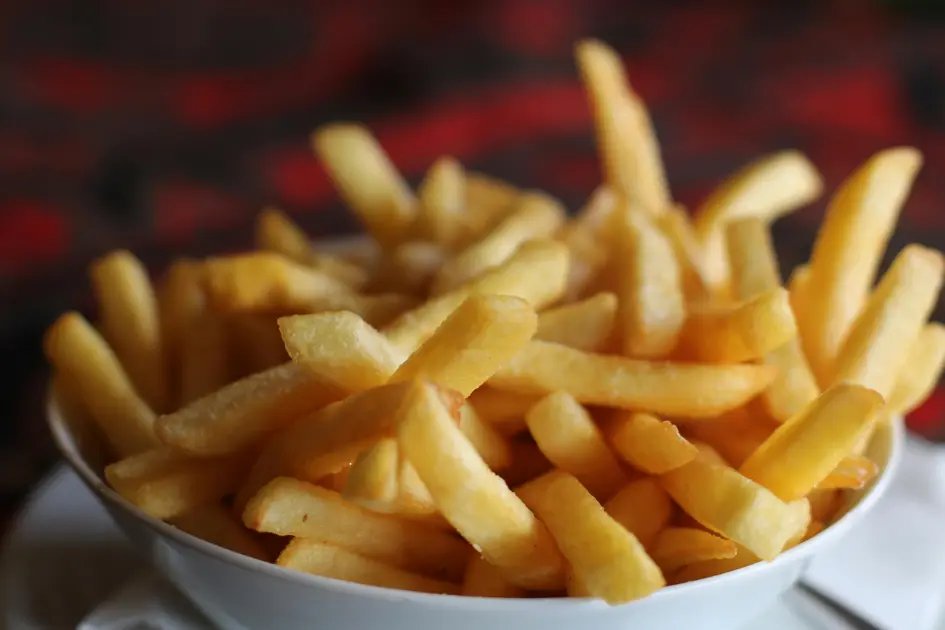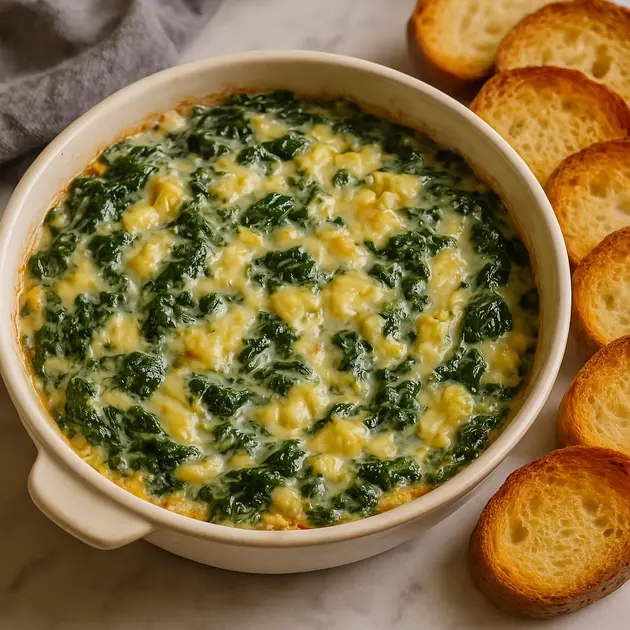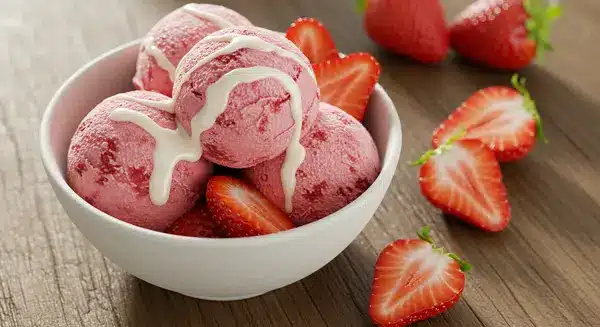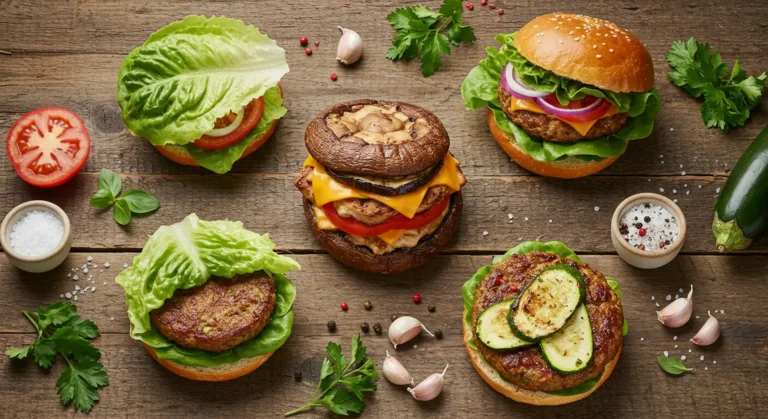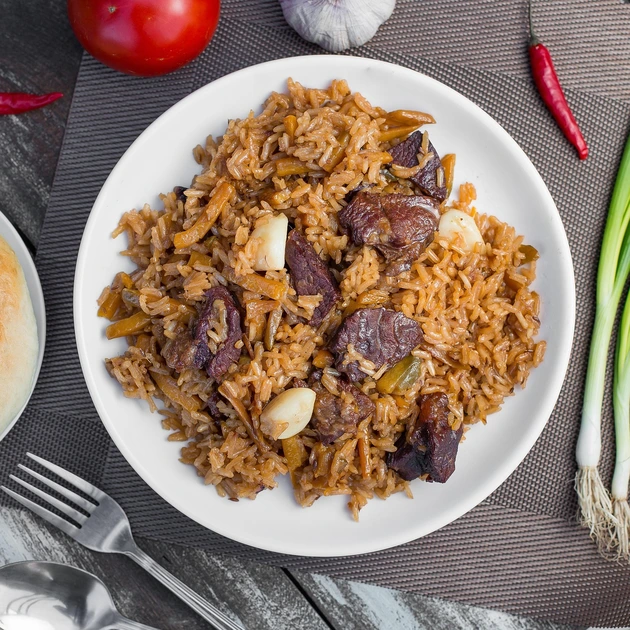The Ultimate Guide to Crispy Homemade French Fries: Classic, Oven-Baked & Secret Techniques
Discover the secrets to restaurant-quality French fries at home with our foolproof methods. Perfect your technique for golden, crispy fries every time, whether deep-fried or baked in the oven.
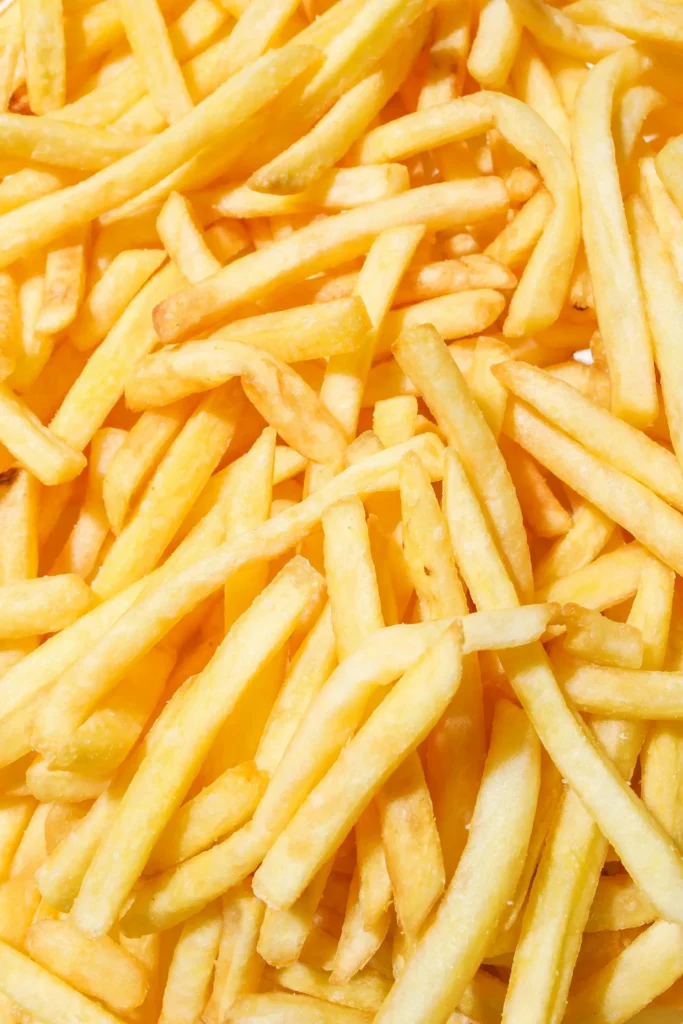
Table of Contents
Introduction: The Humble French Fry’s Culinary Journey
French fries those golden sticks of potato perfection hold a special place in culinary hearts worldwide. Despite their name suggesting French origins, these beloved potato treats actually trace back to Belgium in the late 1600s. What began as a humble side dish has evolved into a global phenomenon, appearing on menus from fast-food establishments to fine dining restaurants.
The perfect French fry presents a culinary paradox: a crispy, golden exterior giving way to a fluffy, tender interior. This textural contrast is what separates ordinary fries from extraordinary ones. While seemingly simple just potatoes and oil, the science and technique behind creating truly exceptional French fries involve precise steps that many home cooks overlook.
In this comprehensive guide, we’ll demystify the art of French fry making. You’ll learn not only the classic deep-frying method that restaurants use but also healthier oven-baked alternatives that don’t compromise on taste or texture. We’ll explore the science behind what makes fries crispy, the best potato varieties to use, and professional techniques that elevate homemade fries from good to unforgettable.
Key Ingredients: Choosing the Right Potatoes
The foundation of exceptional French fries begins with selecting the right potato variety. Not all potatoes are created equal when it comes to frying:
- Russet potatoes (also known as Idaho potatoes) are the gold standard for classic French fries. Their high starch content creates that fluffy interior while developing a crispy exterior when fried.
- Yukon Gold potatoes offer a naturally buttery flavor and slightly waxier texture, making them excellent for fries with a creamier interior.
- Kennebec potatoes are a chef’s secret weapon—these less common spuds have the perfect balance of starch and moisture for consistently crispy fries.
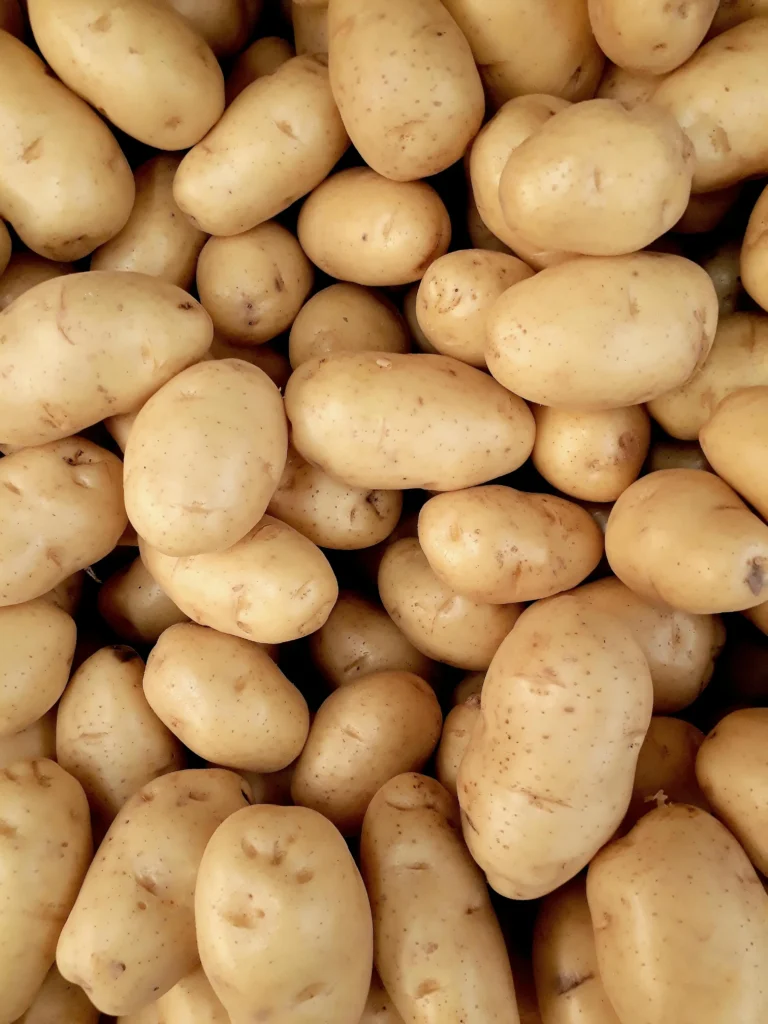
Avoid waxy potatoes like red potatoes or new potatoes, as their high moisture and low starch content won’t create the ideal French fry texture.
Beyond potatoes, quality oil is crucial. The best oils for frying have high smoke points and neutral flavors:
- Peanut oil (preferred by many restaurants)
- Vegetable oil
- Canola oil
- Rice bran oil
For seasoning, kosher salt is the traditional choice, though seasoned salt, garlic salt, or herb-infused salts offer delicious variations.
Essential Equipment for Perfect French Fries
Having the right tools makes all the difference between restaurant-quality fries and soggy disappointments:
For Classic Deep-Fried French Fries:
- Deep, heavy-bottomed pot (at least 6-quart capacity) or dedicated deep fryer
- Candy/deep-fry thermometer for precise temperature control
- Spider strainer or slotted spoon for removing fries from hot oil
- Mandoline slicer or sharp chef’s knife for consistent cutting
- Large mixing bowls for soaking potatoes
- Cooling racks placed over baking sheets for draining
- Paper towels for absorbing excess oil
- Kitchen scale (optional but helpful for consistency)
- Heat-resistant gloves for safety
For Oven-Baked French Fries:
- Rimmed baking sheets (preferably heavy-duty)
- Parchment paper for easy cleanup and preventing sticking
- Mixing bowls for tossing potatoes with oil and seasonings
- Mandoline or knife for consistent cutting
- Spatula for flipping
- Oven thermometer for accurate temperature readings
Investing in quality equipment not only makes the fry-making process easier but also significantly improves your results, especially when it comes to achieving that perfect crispy exterior.
I use affiliate links that give me a small commission, no additional cost for you.
Affiliate links help support my work without affecting your price.
The Classic French Fry Method: A Step-by-Step Guide
The secret to restaurant-quality French fries lies in a double-frying technique that may seem labor-intensive but delivers unparalleled results:
Step 1: Preparation
- Wash and peel 2 pounds of Russet potatoes (about 4 large potatoes).
- Cut potatoes into ¼-inch thick sticks of uniform size (about 3-4 inches long).
- Immediately place cut potatoes in a large bowl of cold water to prevent browning and remove excess starch.
- Soak potatoes for at least 30 minutes (or up to overnight in the refrigerator).
- Drain thoroughly and pat completely dry with paper towels or clean kitchen towels.
Step 2: First Fry (Blanching)
- Fill a large, heavy-bottomed pot with 3 inches of oil and heat to 325°F (163°C).
- Working in batches (never crowd the pot), fry the potatoes for 4-5 minutes.
- The potatoes should be soft and pale, not browned.
- Remove with a spider strainer or slotted spoon and place on a paper towel-lined baking sheet.
- Allow fries to cool completely (at least 30 minutes) or refrigerate for up to several hours.
Step 3: Second Fry (Crisping)
- Increase oil temperature to 375°F (190°C).
- Again working in batches, fry the blanched potatoes until golden brown and crispy, about 3-4 minutes.
- Transfer immediately to a paper towel-lined baking sheet or cooling rack.
- Season with kosher salt while still hot.
- Serve immediately for maximum crispiness.
This double-frying method works because the first, lower-temperature fry cooks the potato through without creating a seal, allowing moisture to escape. The cooling period between fryings further removes moisture from the exterior. The second, higher-temperature fry then creates the perfect crispy shell around a fluffy interior.
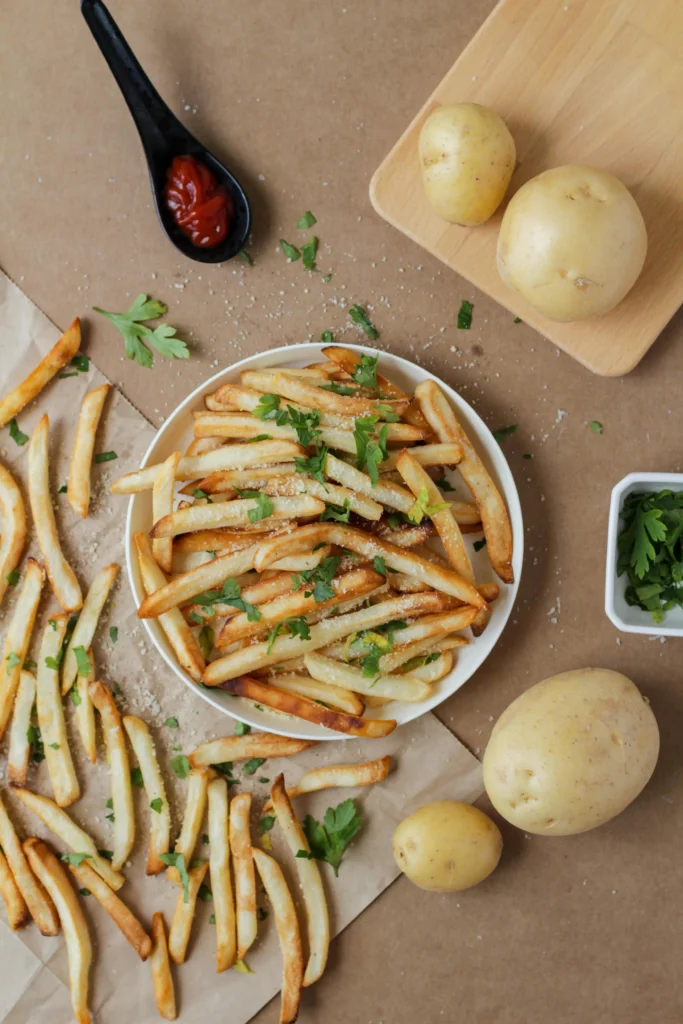
Oven-Baked French Fries: The Healthier Alternative
For those seeking a healthier option that still delivers on taste and texture, oven-baked fries are the answer. While they might not achieve the exact same crispiness as deep-fried versions, these techniques come remarkably close:
Ingredients:
- 2 pounds Russet potatoes
- 3 tablespoons vegetable or olive oil
- 2 tablespoons cornstarch (the secret to crispy oven fries)
- 1 teaspoon garlic powder (optional)
- 1 teaspoon paprika (optional)
- Salt and pepper to taste
Instructions:
- Preheat your oven to 425°F (220°C) with a baking sheet inside (preheating the baking sheet is crucial).
- Cut your potatoes into ¼-inch sticks, then soak in cold water for 30 minutes.
- Drain thoroughly and pat completely dry with paper towels.
- In a large bowl, toss the dried potato sticks with cornstarch until lightly coated.
- Add oil and seasonings, tossing until evenly coated.
- Carefully remove the hot baking sheet from the oven and arrange fries in a single layer, ensuring they don’t touch.
- Bake for 15 minutes, then flip each fry with a spatula.
- Return to oven and bake for an additional 10-15 minutes until golden and crispy.
- Immediately season with salt when removed from the oven.
Pro Tips for Crispier Oven Fries:
- Steam release: Leave space between each fry on the baking sheet—crowding leads to steaming instead of crisping.
- Elevate for air circulation: Use a wire rack on your baking sheet for even crisping.
- Convection advantage: Use your oven’s convection setting if available for an extra crispy result.
- Soak, then dry thoroughly: Moisture is the enemy of crispiness—ensure potatoes are bone dry before oiling.
- Oil temperature matters: Heat your oil and seasonings in a small saucepan before tossing with potatoes for better absorption.
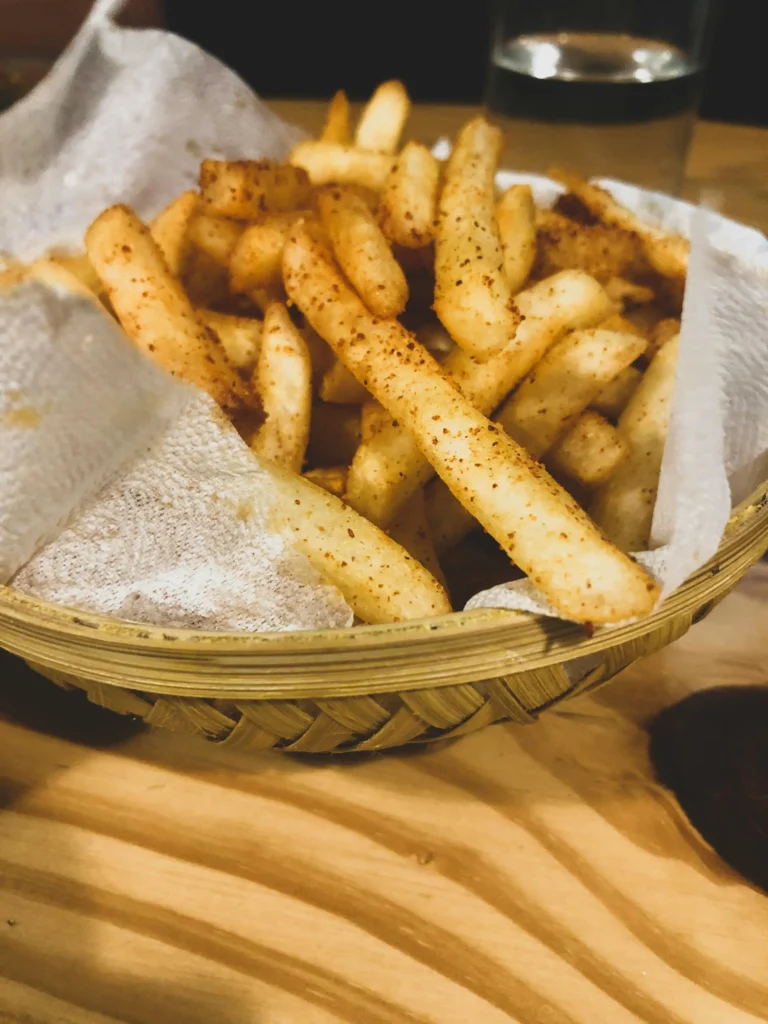
Flavor Variations: Elevating Your French Fry Game
Once you’ve mastered the basic techniques, explore these gourmet variations to transform ordinary fries into culinary sensations:
Seasoning Blends (Add immediately after cooking):
- Garlic Parmesan: 2 tablespoons grated Parmesan, 1 teaspoon garlic powder, 1 tablespoon fresh parsley
- Cajun Style: 1 tablespoon Cajun seasoning, ½ teaspoon cayenne pepper
- Truffle Fries: 2 tablespoons grated Parmesan, 1 teaspoon truffle oil, 1 tablespoon fresh parsley
- Salt & Vinegar: Malt vinegar sprinkled over hot fries with sea salt
- Sweet Potato Variation: Substitute sweet potatoes for regular potatoes, season with cinnamon and a touch of brown sugar
Dipping Sauces:
- Classic Fry Sauce: ½ cup mayonnaise, ¼ cup ketchup, 1 tablespoon pickle juice, ½ teaspoon garlic powder
- Garlic Aioli: ½ cup mayonnaise, 2 cloves minced garlic, 1 tablespoon lemon juice, pinch of salt
- Spicy Ketchup: ½ cup ketchup, 1 tablespoon hot sauce, ½ teaspoon smoked paprika
- Herb Ranch: ½ cup ranch dressing, 1 tablespoon each fresh chopped dill, parsley, and chives
Troubleshooting Common French Fry Problems
Even experienced cooks encounter challenges when making French fries. Here’s how to fix common issues:
- Soggy fries: Usually caused by incorrect oil temperature (too low) or overcrowding the fryer. Use a thermometer and fry in smaller batches.
- Greasy fries: Often results from oil not being hot enough or fries not being properly dried before frying. Ensure oil is at the correct temperature and potatoes are thoroughly dried.
- Undercooked interior: The first blanching fry wasn’t long enough. Increase the time of the first fry by 1-2 minutes.
- Burnt exterior, raw interior: Oil temperature too high. Lower temperature and monitor closely.
- Discolored fries: Potatoes not properly soaked or dried. Soak cut potatoes longer to remove excess starch.
Storage and Reheating Tips
While French fries are best enjoyed immediately after cooking, sometimes you need to make them ahead or have leftovers:
Storage:
- Refrigerate cooled fries in an airtight container for up to 3 days.
- Freeze blanched but not fully fried potatoes for up to 3 months in freezer bags.
Reheating for Maximum Crispiness:
- Oven method: Spread fries on a baking sheet and heat at 400°F (205°C) for 5-7 minutes.
- Air fryer method: Heat at 350°F (175°C) for 3-4 minutes.
- Skillet method: Heat a tablespoon of oil in a non-stick skillet and cook fries until re-crisped.
- Avoid microwaving as this makes fries soggy and unappetizing.
Health Considerations: Making Smarter French Fry Choices
While French fries are typically considered an indulgence, there are ways to make them more nutritionally balanced:
- Leave the skin on for added fiber and nutrients.
- Try air-frying for significantly less oil usage.
- Experiment with healthier oils like avocado oil.
- Incorporate herbs for flavor without added sodium.
- Bake sweet potato fries for more vitamins and a lower glycemic index.
- Practice portion control by serving with protein and vegetables.
Remember that even with these modifications, French fries should be enjoyed as an occasional treat rather than a dietary staple.
Conclusion: The Art of Perfect French Fries
Mastering homemade French fries is a culinary skill worth developing. Whether you prefer the classic deep-fried version or the healthier oven-baked alternative, the techniques outlined in this guide will help you achieve restaurant-quality results every time. The key takeaways—selecting the right potatoes, proper preparation, precise cooking temperatures, and attention to detail—apply across all methods.
With practice, you’ll develop an intuition for exactly when your fries have reached golden perfection. You might even find yourself experimenting with your own signature seasonings and dipping sauces. Whatever variations you try, remember that great French fries begin with understanding the fundamentals.
So heat up that oil or preheat your oven, grab some quality potatoes, and embark on your journey to French fry perfection. Your taste buds—and impressed dinner guests will thank you.
Frequently Asked Questions About Homemade French Fries
Why soak potatoes in water before making French fries?
Soaking potatoes in cold water removes excess starch from the surface, which helps prevent the fries from sticking together and promotes crispiness. The soaking process also removes sugars that could cause premature browning before the interior is fully cooked.
What’s the best oil for making French fries?
The best oils for French fries have high smoke points and neutral flavors. Peanut oil is traditional and preferred by many restaurants. Other excellent options include vegetable oil, canola oil, and rice bran oil. Avoid olive oil, which has too low a smoke point for proper frying.
Can I make French fries ahead of time?
Yes! You can prepare fries through the first frying (blanching) stage, then cool and refrigerate them for up to several hours or freeze for longer storage. When ready to serve, simply complete the second fry directly from refrigerated or frozen state (frozen will take slightly longer).
Why are my homemade fries not crispy?
Common reasons for soggy fries include: not thoroughly drying potatoes after soaking, frying at too low a temperature, overcrowding the fryer which lowers oil temperature, or using the wrong type of potato. Using the double-fry method and ensuring proper oil temperature will significantly improve crispiness.
How do restaurants keep fries crispy for so long?
Commercial kitchens use specialized holding equipment that maintains temperature while allowing moisture to escape. They also typically use potato varieties specifically bred for frying, and often coat fries with a thin starch solution before the first fry to create an extra-crispy exterior.
Are frozen French fries already cooked?
Most commercial frozen French fries are partially cooked (blanched) before freezing. This is why they cook more quickly than fresh potatoes. However, they still need to be fully cooked before eating, whether by baking, air frying, or deep frying.
How do I cut potatoes evenly for French fries?
For consistently sized fries, first cut the potato in half lengthwise, then place the flat sides down and cut into planks of your desired thickness. Stack these planks and cut them into sticks. A mandoline slicer with the appropriate attachment can also create perfectly uniform fries.
Can I make French fries without deep frying?
Absolutely! Oven-baked fries can be delicious when made properly. The keys to crispy oven fries include: thoroughly drying the potatoes, using cornstarch for extra crispiness, preheating the baking sheet, and ensuring the fries don’t touch each other while baking.
What’s the difference between French fries and Belgian frites?
While similar, Belgian frites are typically thicker than American-style French fries and are almost always double-fried. Traditional Belgian frites are served in a paper cone with mayonnaise-based sauces rather than ketchup.
How can I make my French fries healthier?
For healthier fries: bake instead of fry, leave the skins on for added nutrients and fiber, use heart-healthy oils like avocado oil, experiment with sweet potatoes which have more vitamins, and watch portion sizes. An air fryer can also significantly reduce oil usage while still providing a crispy texture.

